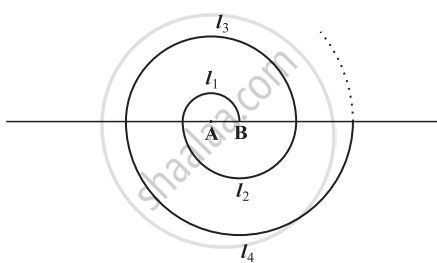Advertisements
Advertisements
प्रश्न
Find the sum of all odd numbers between 100 and 200.
उत्तर
In this problem, we need to find the sum of all odd numbers lying between 100 and 200.
So, we know that the first odd number after 0 is 101 and the last odd number before 200 is 199.
Also, all these terms will form an A.P. with the common difference of 2.
So here,
First term (a) = 101
Last term (l) = 199
Common difference (d) = 2
So, here the first step is to find the total number of terms. Let us take the number of terms as n.
Now, as we know,
`a_n = a + (n - 1)d`
So, for the last term,
`199 = 101 + (n - 1)2`
199 = 101 + 2n - 2
199 = 99 + 2n
199 - 99 = 2n
Further simplifying,
100 = 2n
`n = 100/2`
n = 50
Now, using the formula for the sum of n terms,
`S_n = n/2 [2a + (n -1)d]`
For n = 50 we get
`S_n = 50/2 [2(101) + (50 - 1)2]`
`= 25 [202 + (49)2]`
= 25(202 + 98)
= 25(300)
= 7500
Therefore the sum of all the odd numbers lying between 100 and 200 is `S_n = 7500`
APPEARS IN
संबंधित प्रश्न
The ratio of the sum use of n terms of two A.P.’s is (7n + 1) : (4n + 27). Find the ratio of their mth terms
A spiral is made up of successive semicircles, with centres alternately at A and B, starting with centre at A of radii 0.5, 1.0 cm, 1.5 cm, 2.0 cm, .... as shown in figure. What is the total length of such a spiral made up of thirteen consecutive semicircles? (Take `pi = 22/7`)

[Hint: Length of successive semicircles is l1, l2, l3, l4, ... with centres at A, B, A, B, ... respectively.]
The sum of three terms of an A.P. is 21 and the product of the first and the third terms exceed the second term by 6, find three terms.
Find the sum of the following arithmetic progressions:
3, 9/2, 6, 15/2, ... to 25 terms
Find the sum of all 3 - digit natural numbers which are divisible by 13.
Find the 25th term of the AP \[- 5, \frac{- 5}{2}, 0, \frac{5}{2}, . . .\]
Find the sum of numbers between 1 to 140, divisible by 4
The first term of an AP of consecutive integers is p2 + 1. The sum of 2p + 1 terms of this AP is ______.
Find the sum of first seven numbers which are multiples of 2 as well as of 9.
How many terms of the AP: –15, –13, –11,... are needed to make the sum –55? Explain the reason for double answer.
